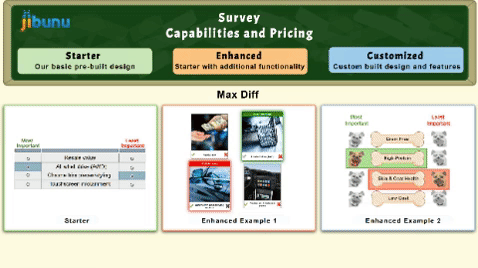People generally like filling out surveys, but when they’re faced with a long, overwhelming list of needy, prying questions, it can more closely resemble an angry ghoul than a helpful tool. When writing a survey, then, you want to create questions that encourage honest answers, instead of scaring them away.
Unfortunately, that’s easier said than done. Defining exactly what makes a question “good” or “bad” is not always a static answer and can differ depending on who you ask. To help you avoid the worst, most bone-chilling types of questions, pay attention to the following list of examples so you avoid the kinds of questions that will undoubtedly spook your respondents away.
Too Personal
There are few things people dislike more than a breach of their privacy. If you write a question that seems to pry into someone’s personal life, you’re going to alienate them and get under their skin, quickly killing any chance of them finishing your survey or coming back to your brand in the future. Instead of pointedly asking personal questions, start with broad questions and gradually work your way in.
You still want to avoid invading their personal lives, but if you show respect for their boundaries and focus on building up trust, it’ll be easier for them to be honest with you later on.
Too Long

People have short attention spans, so if you’re writing questions that take longer than several seconds to read, answer, and move on from, you’re doing it wrong. Be simple and direct with your survey questions, and avoid needless complexities whenever and however possible.
The same mentality should be applied to the answer choices you provide, as too many options will further confuse a respondent and send their attention running elsewhere. Making respondents answer the same series of questions over and over again for 20 different brands is enough to send them to an early grave. In all likelihood, your respondents have already taken the English portion of the SAT test — don’t make them take it again.
Not Mobile Friendly

Trying to take a survey that is not mobile-friendly can be a nightmare for respondents. More and more people are taking surveys on their mobile devices, and if your survey isn’t optimized for them, then they won’t even bother reading past your introduction. Convenience and accessibility are key characteristics in good surveys, so be sure to optimize for every kind of respondent.
Forced Open-Ended Questions
While allowing the respondent to answer in their own words can sometimes be beneficial, it often isn’t. Forcing an open-ended question on someone who doesn’t want one is a surefire way to intimidate them into retreat. You can include an option for the respondent to respond in their own words, but making it mandatory may get you a vague answer, or no answer at all. If you must force open-ended questions be strategic about when you ask them and how many you include in your survey.
Confusing Questions

This is by far the most common mistake in surveys, as confusing or double-barreled questions can shape-shift into so many different forms, making them tricky to track down. Mistakes such as unclear wording, double negatives, and indirect questions will muddle your message and make it needlessly challenging for a respondent to answer.
Double-barreled questions can be especially confusing because they demand that the respondent answer two questions at once, and in a survey, that’s never a good idea. Not only do these questions sound frightening, but they’re also a common – and disastrous – mistake made in all kinds of survey questions.
 For example, if you were to ask your respondents, “do you enjoy movies and pizza?,” you would be alienating any respondents who love a good pie but hate going to the theater and any other respondents who can’t stand the smell of mozzarella but have the complete Star Wars collection sitting on their shelf.
For example, if you were to ask your respondents, “do you enjoy movies and pizza?,” you would be alienating any respondents who love a good pie but hate going to the theater and any other respondents who can’t stand the smell of mozzarella but have the complete Star Wars collection sitting on their shelf.
When you’re constantly competing for the attention of your respondents, the clearer your questions are, the better your survey’s success will be. To combat the plague of confusion, read your questions out loud and to a colleague to check for clarity.


